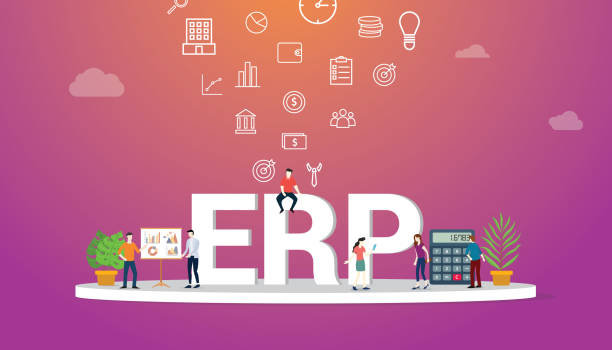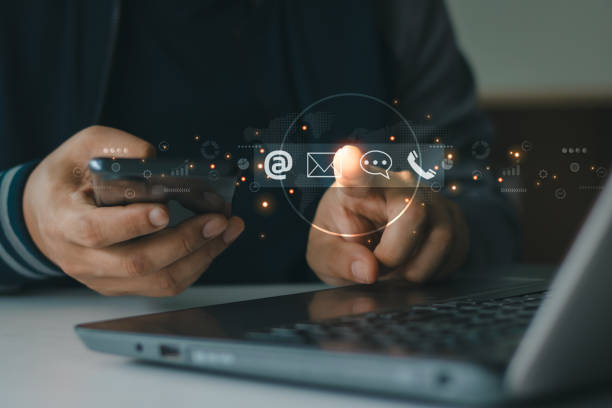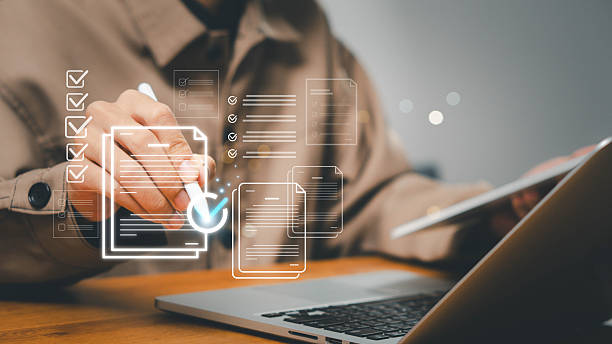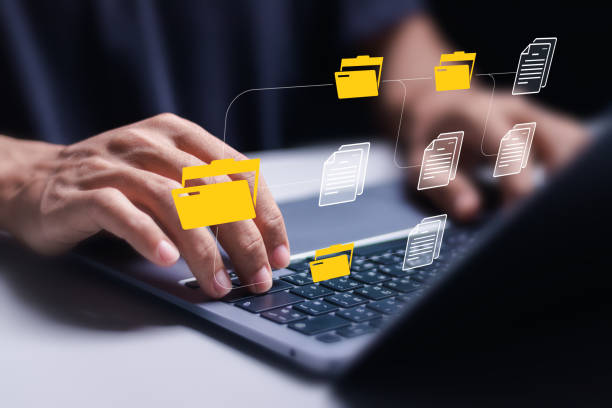What is On-Page SEO and why is it important?

On-page SEO, or On-Page SEO, refers to a set of actions we take within our website to improve its ranking in Google search results.
These actions include optimizing content, site structure, HTML tags, and other internal site elements.
The importance of #On_Page_SEO stems from the fact that it helps search engines better understand your site’s content and relate it to user searches.
Strong on-page SEO provides a solid foundation for other SEO strategies, such as off-page SEO and technical SEO.
By optimizing internally, the chance of being seen in search results increases, and organic site traffic improves.
Therefore, on-page SEO is one of the main pillars of success in online marketing.
Also, keep in mind that on-page SEO means understanding how users behave on your site and optimizing the user experience.
By improving page loading speed, responsive design, and providing quality content, not only search engines but also users will be more satisfied with your website.
Don’t have a corporate website yet and missing out on online opportunities? With professional corporate website design by Rasaweb,
✅ Double your business credibility
✅ Attract new customers
⚡ Free consultation for your corporate website!
Keyword Research #KeyWords and its Role in On-Page SEO

Keyword research is the first step in any SEO strategy.
The goal of this research is to identify the words that users use to find content similar to yours in search engines.
By understanding these words, you can optimize your content around them to increase the chance of being seen in search results.
Various tools are available for keyword research, including Google Keyword Planner, Ahrefs, SEMrush, and Moz Keyword Explorer.
These tools help you find keywords relevant to your business, check their search volume, and assess the level of competition for them.
After identifying keywords, you should strategically use them in your content.
This includes using keywords in the page title, meta description, main body text, HTML tags (such as H1 to H6 tags), and image names.
However, you should avoid excessive use of keywords (Keyword Stuffing), as this can lead to your site being penalized by Google.
Remember that the main goal is to provide quality and relevant content for users, not just to trick search engines.
Also note that on-page SEO, by using appropriate keywords, helps search engines understand the main topic of your page and display it in relevant search results.
This leads to attracting more targeted traffic and increasing conversion rates.
Optimizing Page Title (Title Tag) and Meta Description
![]()
The page title (Title Tag) and meta description (Meta Description) are two important HTML elements displayed in search results.
The page title is the main title of the page that appears at the top of the browser window and in search results.
The meta description is a short summary of the page’s content that is displayed below the page title in search results.
Optimizing these two elements is very important for on-page SEO, as they are the first thing users see when viewing search results.
An attractive and descriptive page title can encourage users to click on your link.
The meta description can also provide more information about the page’s content and help users decide whether this page is suitable for them.
To optimize the page title, you should use your main keywords and keep the title as attractive and relevant as possible.
The page title length should not exceed 60 characters.
To optimize the meta description, you should provide a precise and attractive summary of the page’s content and use your secondary keywords.
The meta description length should not exceed 160 characters.
Here is an example of an optimized page title and meta description:
Page Title: On-Page SEO Training | On-Page SEO Training | Meta Description: On-Page SEO Training from beginner to advanced with practical tips and tricks to improve your site’s ranking on Google
Content Optimization Using H1 to H6 Tags and Images

H1 to H6 tags are used to structure page content.
The H1 tag is the main title of the page and should only be used once per page.
H2 to H6 tags are subheadings and can be used as many times as needed on the page.
Correct use of these tags is very important for on-page SEO, as it helps search engines understand the structure and main topic of the page.
The H1 tag should include the main keyword of the page, and H2 to H6 tags should include secondary keywords.
Images also play an important role in on-page SEO.
High-quality and relevant images can make page content more attractive and improve the user experience.
Also, search engines can understand images and use them to rank pages.
To optimize images, you should use descriptive file names and fill in the Alt tag for each image.
The Alt tag is alternative text that is shown to the user if the image cannot be displayed.
This tag should provide an accurate summary of the image content and include relevant keywords.
Optimizing images also helps improve page loading speed, which is an important factor in SEO.
Are you worried about losing customers because you don’t have a professional e-commerce site?
With e-commerce website design by Rasaweb, forget these worries!
✅ Significant increase in sales and conversion rate from visitor to customer
✅ Professional and user-friendly design that builds customer trust
⚡ Get free consultation from Rasaweb
The Importance of Page Loading Speed and its Optimization

Page loading speed is one of the most important factors in on-page SEO and user experience.
Users expect web pages to load within a few seconds.
If your page is slow, users will quickly leave it and go to other sites.
Google also considers page loading speed as an important factor in ranking websites.
Sites with high loading speeds have a better chance of ranking in search results.
To improve page loading speed, you can take various actions, including:
Image optimization: Reducing image size without losing quality
Browser caching activation: Storing site files in users’ browsers
Using a CDN: Distributing site content across various servers worldwide
Code optimization: Reducing the size of HTML, CSS, and JavaScript code
Using quality hosting: Choosing a reputable and high-speed hosting company
By optimizing page loading speed, you not only improve your site’s ranking on Google but also enhance the user experience and increase conversion rates.
Appropriate URL Structure and its Impact on On-Page SEO

URL (web address) structure is another important factor in on-page SEO.
Short, descriptive, and keyword-rich URLs help search engines better understand the page’s topic.
The best way to create appropriate URLs is to use a hierarchical structure.
This means that URLs should have a logical structure and indicate which section of the site the page belongs to.
For example, if you have a blog about SEO, your blog URLs could look like this:
example.com/blog/seo-internal
This URL indicates that the page in question is a blog post about on-page SEO.
Also, you should avoid using unnecessary characters and numbers in URLs.
URLs should be as short and readable as possible.
By optimizing the URL structure, you can improve your site’s on-page SEO and increase its ranking on Google.
Using appropriate and professional on-page SEO will boost your business.
Internal Linking and Site Navigation Improvement

Internal linking means creating links between different pages of your own site.
This helps search engines better understand your site’s structure and identify more important pages.
Internal linking also helps users easily navigate your site and find the content they are looking for.
For internal linking, you should use descriptive anchor texts.
Anchor text is the text on which the link is placed.
This text should accurately describe the topic of the page you have linked to.
For example, if you link from a page about on-page SEO to another page about off-page SEO, the anchor text should be something like ‘Off-Page SEO’.
Also, you should try to avoid excessive internal linking.
Excessive linking can confuse users and search engines.
With proper internal linking, you can improve your site’s on-page SEO and enhance the user experience.
Site structure is also very important.
Make sure your site has a sitemap that helps search engines find all your site’s pages.
Also, you should ensure that your site has a clear and easy navigation menu that helps users easily move around your site.
| On-Page SEO Factor | Importance | Description |
|---|---|---|
| Keywords | Very High | Using relevant keywords in title, description, and content |
| Loading Speed | Very High | Optimizing site speed for better user experience |
| Internal Linking | High | Creating links between internal site pages for easier navigation |
| URL Structure | Medium | Using short and descriptive URLs |
Mobile SEO and Responsive Design

With the increasing use of mobile phones for web browsing, mobile SEO has become one of the most important aspects of SEO.
Google also prioritizes sites that are optimized for mobile devices.
Responsive Design means that your site automatically adapts to the screen size of the user’s device.
This allows users to easily use your site on any device, without the need for zooming or horizontal scrolling.
To ensure your site is optimized for mobile devices, you can use Google’s Mobile-Friendly Test tool.
This tool shows you how your site appears on mobile devices and what issues it has.
By optimizing your site for mobile devices, you can improve your site’s on-page SEO and attract more traffic from mobile users.
Did you know that poor online store design can drive away up to 70% of your potential customers? Rasaweb transforms your sales with professional and user-friendly e-commerce website designs.
✅ Significant increase in sales and revenue
✅ Full optimization for search engines and mobile
⚡ [Get free consultation from Rasaweb]
The Importance of Quality and Unique Content

Quality and unique content is the beating heart of any website.
Google rewards sites that provide valuable and relevant content and ranks them in search results.
To create quality content, you need to understand your users’ needs and produce content that answers their questions and solves their problems.
Your content should be accurate, comprehensive, up-to-date, and error-free.
Also, your content must be unique.
Copying others’ content not only harms your site’s SEO but can also lead to your site being penalized by Google.
To produce unique content, you can use your own experiences, new research, and personal perspectives.
Also, you can use various content formats, such as text, images, videos, and podcasts, to make your content more appealing.
By producing quality and unique content, you can improve your site’s on-page SEO and attract more audiences.
| Content Type | SEO Benefits | Example |
|---|---|---|
| Blog Articles | Increased organic traffic, audience attraction | Comprehensive On-Page SEO Guide Article |
| Videos | Increased user dwell time on site, improved YouTube ranking | On-Page SEO Training Video |
| Infographics | Easy sharing, backlink acquisition | On-Page SEO Steps Infographic |
| Podcasts | Access to new audiences, building stronger audience relationships | On-Page SEO Tips Podcast |
On-Page SEO Tools and How to Use Them

On-page SEO tools help you optimize your site for search engines and increase its ranking on Google.
These tools can assist you with keyword research, competitor analysis, site speed checks, finding SEO errors, and many other tasks.
Some of the most popular on-page SEO tools include:
Google Search Console: A free tool from Google that provides valuable information about your site’s performance in search results.
Google Analytics: A free tool from Google that provides detailed information about your site’s traffic.
Ahrefs: A paid tool that helps you analyze your competitors, check backlinks, and find new keywords.
SEMrush: A paid tool that helps you track your keywords, check your site’s ranking on Google, and find SEO errors.
Moz Pro: A paid tool that helps you optimize your site’s on-page SEO and off-page SEO.
By using these tools, you can improve your site’s on-page SEO and increase its ranking on Google.
On-page SEO for websites becomes more efficient with the help of these tools, allowing necessary optimizations to be easily performed, and ultimately on-page SEO will lead to increased sales and audience engagement.
Frequently Asked Questions
| No. | Question | Answer |
|---|---|---|
| 1 | What is On-Page SEO? | On-page SEO refers to a set of actions performed within a website to optimize its pages to achieve a better ranking in search results. |
| 2 | What is the most important factor in On-Page SEO? | High-quality, relevant, and comprehensive content that meets user needs is the most important factor in On-Page SEO. |
| 3 | What role does the Title Tag play in On-Page SEO? | The title tag is one of the most important factors that tells search engines and users what the page content is about. It should include the main keyword and be attractive. |
| 4 | How important is the Meta Description tag? | Although it does not directly affect ranking, it is very effective on the click-through rate (CTR) in search results and encourages users to visit the page. |
| 5 | How is image optimization done in On-Page SEO? | By using appropriate alt tags, compressing image size to increase loading speed, and meaningfully naming the image file. |
| 6 | What is the importance of using headings (H1, H2, H3) in On-Page SEO? | Headings help structure content, increase readability, and assist search engines in understanding the hierarchy and sub-topics of the content. |
| 7 | What is Internal Linking and what are its benefits? | Internal linking means creating links between different pages of a website. This helps distribute authority, improve user navigation, and assist search engine crawling. |
| 8 | Where should the Focus Keyword be placed on the page? | The main keyword should be placed in the title tag, meta description, H1, first paragraph, naturally throughout the text, and if possible, in the URL. |
| 9 | What impact does duplicate or copied content have on On-Page SEO? | Duplicate content can harm a site’s ranking and confuse search engines as to which version is original, potentially leading them to identify it as spam. |
| 10 | How important is page loading speed in On-Page SEO? | Page loading speed is an important ranking factor and directly impacts user experience. Slow pages lead to an increase in user bounce rates. |
And other services of Rasaweb Advertising Agency in the field of advertising
- Smart Google Ads: A novel service to improve SEO ranking through precise audience targeting.
- Smart Website Development: A professional solution for online growth focusing on SEO-driven content strategy.
- Smart Link Building: A combination of creativity and technology to attract customers through custom programming.
- Smart Brand Identity: An effective tool for analyzing customer behavior with the help of smart data analysis.
- Smart Customer Journey Map: Professional optimization for digital branding using custom programming.
And over a hundred other services in the field of internet advertising, advertising consultation, and organizational solutions
Internet Advertising | Advertising Strategy | Advertorials
Sources
? To elevate your business in the digital world, Rasaweb Afarin Digital Marketing Agency offers innovative and effective solutions. Are you looking for personal website design?
📍 Tehran, Mirdamad Street, next to Bank Markazi, Southern Kazeroon Alley, Ramin Alley, No. 6




